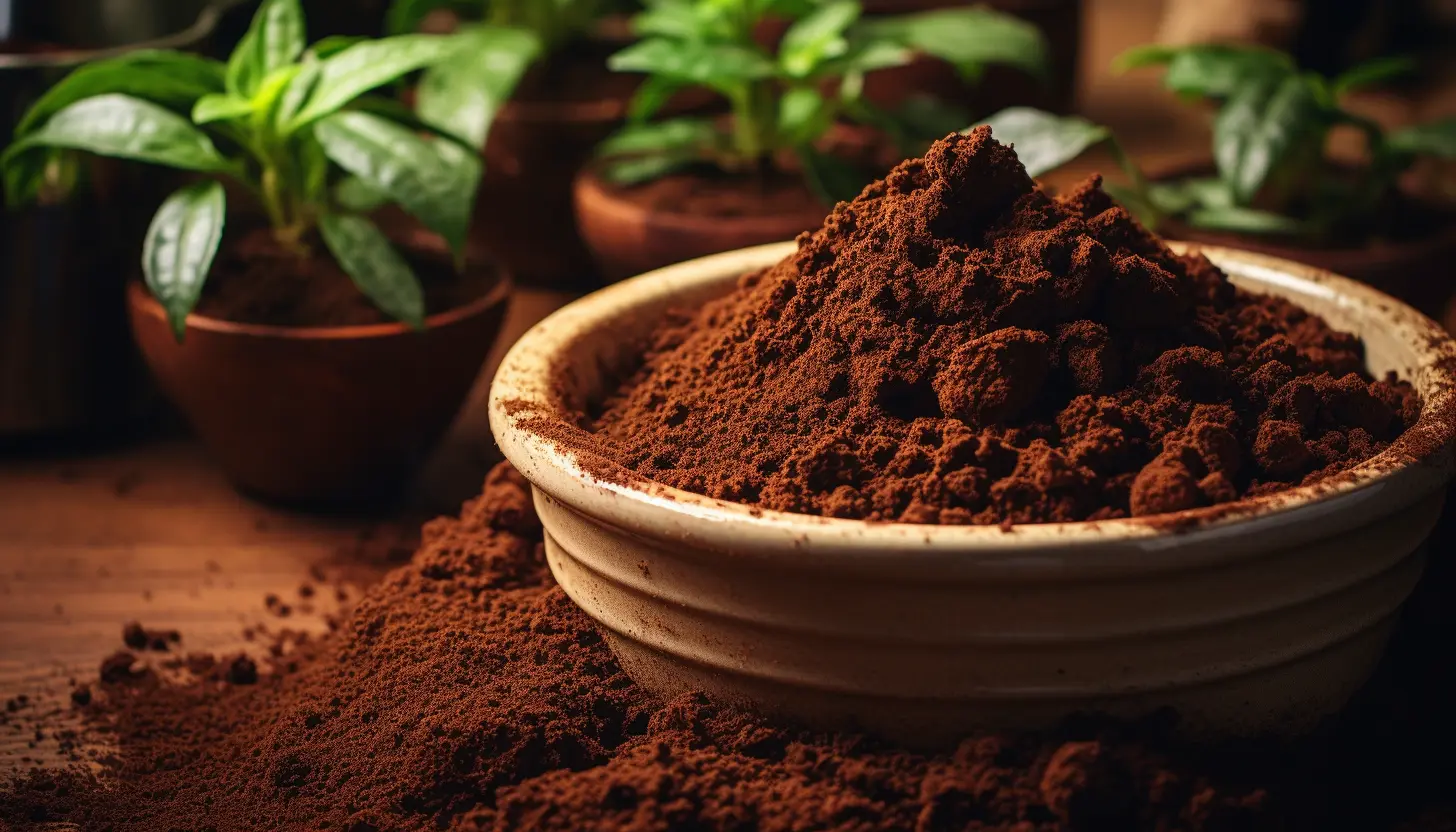Coffee grounds are a common byproduct of our beloved morning ritual. Whether you enjoy a hot cup of joe at home or grab your favorite brew at a local coffee shop, dealing with the aftermath of coffee grounds is a necessary task. But have you ever wondered what actually dissolves these stubborn remnants?
In this blog post, we will explore the science behind coffee grounds dissolution and delve into various methods to effectively dissolve them. Understanding the composition and characteristics of coffee grounds is the first step towards finding the best solution. We will also discuss the problems caused by coffee grounds in plumbing systems, the environmental impact of improper disposal, and the impact on coffee equipment.
To tackle the issue of dissolving coffee grounds, we will explore different methods such as using hot water, vinegar solution, and commercially available products. Additionally, we will provide preventive measures to avoid coffee grounds accumulation, including proper disposal techniques, regular cleaning of coffee equipment, and utilizing coffee grounds for composting.
The science behind coffee grounds dissolution is intriguing. We will examine the role of temperature and acidity in dissolving coffee grounds, as well as delve into the solubility of organic matters. By understanding these factors, you will be better equipped to dissolve coffee grounds effectively and efficiently.
So, if you’re tired of dealing with stubborn coffee grounds and are looking for solutions, keep reading. This blog post will provide you with the knowledge and methods you need to dissolve coffee grounds and keep your coffee experience hassle-free. Let’s dive in!
Coffee Grounds: Composition and Characteristics
Coffee grounds are the remnants left behind after brewing coffee. To understand how to dissolve coffee grounds effectively, it is important to first understand their composition and characteristics.
- Physical Composition: Coffee grounds are made up of tiny particles that vary in size, ranging from fine to coarse. The texture and size of the grounds can affect their solubility.
- Chemical Composition: Coffee grounds contain various chemical compounds that contribute to their flavor, aroma, and color. The main chemical components of coffee grounds include:
- Caffeine: Caffeine is a natural stimulant found in coffee. It is water-soluble, which means it can dissolve easily in water.
- Chlorogenic Acid: Chlorogenic acid is an antioxidant compound found in coffee. It contributes to the acidity of coffee and has been associated with certain health benefits.
- Melanoidins: Melanoidins are complex compounds formed during the roasting process. They give coffee its characteristic brown color and contribute to the flavor and aroma.
- Lipids: Coffee grounds also contain oils and lipids, which can contribute to the richness and mouthfeel of the brewed coffee.
- Hygroscopic Nature: Coffee grounds have hygroscopic properties, which means they can absorb moisture from the environment. This property can make coffee grounds clump together and become more challenging to dissolve.
- Insoluble Components: Despite their hygroscopic nature, coffee grounds also contain insoluble components. These include cellulose and other plant fibers that do not dissolve easily in water.
Understanding the composition and characteristics of coffee grounds is essential in determining the best methods to dissolve them effectively. By considering factors such as particle size, chemical components, and hygroscopic nature, we can explore various techniques that maximize the dissolution of coffee grounds and ensure a smoother coffee experience.
Why Coffee Grounds Need to be Dissolved
Coffee grounds, although a staple in our daily caffeine fix, can cause a range of problems if not properly dissolved. Understanding why coffee grounds need to be dissolved is crucial in maintaining the functionality of plumbing systems, minimizing environmental impact, and preserving the lifespan of coffee equipment.
- Problems Caused by Coffee Grounds in Plumbing Systems: When coffee grounds are not dissolved, they can accumulate and create blockages in plumbing systems. The fine particles can clump together and form clogs, leading to slow drainage, pipe damage, and potential plumbing emergencies. This can result in costly repairs and inconvenience.
- Environmental Impact of Disposing Coffee Grounds Improperly: Improper disposal of coffee grounds can have adverse effects on the environment. If coffee grounds are disposed of in sinks or flushed down the toilet, they can enter the sewage system and contribute to clogs and blockages in municipal wastewater treatment facilities. Additionally, the high nitrogen content in coffee grounds can disrupt the balance of nutrients in soil if disposed of in large quantities.
- The Impact on Coffee Equipment: Coffee grounds that are not properly dissolved can also have negative consequences for coffee equipment. Over time, accumulated coffee grounds can clog filters, screens, and pipes in coffee machines, leading to decreased performance, inefficient brewing, and potential damage to the equipment. This can result in the need for frequent maintenance and repairs, impacting the longevity and functionality of the coffee equipment.
By understanding the reasons why coffee grounds need to be dissolved, we can take proactive measures to avoid these problems. Properly dissolving coffee grounds not only ensures the smooth operation of plumbing systems and the preservation of coffee equipment but also minimizes environmental impact. In the following sections, we will explore various methods to dissolve coffee grounds effectively and discuss preventive measures to avoid their accumulation.
Methods to Dissolve Coffee Grounds
When it comes to dissolving coffee grounds, there are several methods you can employ. Each method has its own advantages and considerations, so let’s explore the most effective ways to dissolve coffee grounds.
- Using Hot Water: One of the simplest and most common methods to dissolve coffee grounds is by using hot water. Hot water helps to break down the coffee grounds and extract the soluble compounds, such as caffeine and flavor components. To dissolve coffee grounds using hot water: a. Bring water to a boil: Start by bringing water to a boil in a kettle or pot. b. Pour hot water over coffee grounds: Place the desired amount of coffee grounds in a heat-resistant container, such as a French press or coffee maker, and pour the hot water over the grounds. Allow the mixture to steep for a few minutes. c. Stir and strain: After steeping, stir the mixture gently to ensure all the grounds are fully immersed. Then, strain the liquid through a filter or mesh to separate the dissolved coffee from the grounds.
- Using Vinegar Solution: Vinegar, particularly white vinegar, can be an effective solution for dissolving coffee grounds due to its acidity. The acidity helps to break down the grounds and remove any residue or build-up. To dissolve coffee grounds using a vinegar solution: a. Mix vinegar and water: In a container, mix equal parts of white vinegar and water to create a solution. b. Soak coffee equipment: If you’re dealing with coffee equipment that has built-up coffee grounds, such as a coffee machine or French press, dismantle the parts and soak them in the vinegar solution for about 30 minutes. c. Scrub and rinse: After soaking, scrub the equipment to remove any remaining coffee grounds. Rinse thoroughly with clean water to remove any vinegar residue.
- Using Commercially Available Products: There are various commercially available products specifically designed to dissolve coffee grounds and clean coffee equipment. These products often contain enzymes or descaling agents that effectively break down coffee residue. Follow the instructions provided by the manufacturer for the best results.
It’s important to note that regardless of the method you choose, proper disposal of the dissolved coffee grounds is essential. Avoid pouring coffee grounds down the sink or toilet, as they can still contribute to plumbing issues. Instead, dispose of them in a compost bin or use them for gardening purposes.
By utilizing these methods, you can ensure that coffee grounds are effectively dissolved, minimizing the risk of clogs in plumbing systems, extending the lifespan of coffee equipment, and enjoying a smooth and hassle-free coffee experience.
Preventive Measures to Avoid Coffee Grounds Accumulation
To prevent coffee grounds accumulation and the associated problems, it’s essential to adopt preventive measures. By implementing these practices, you can maintain the functionality of plumbing systems, reduce environmental impact, and prolong the lifespan of your coffee equipment. Let’s explore some preventive measures to avoid coffee grounds accumulation:
- Proper Disposal of Coffee Grounds: Instead of disposing of coffee grounds down the sink or toilet, consider alternative methods for proper disposal. Here are a few options: a. Composting: Coffee grounds are rich in nutrients and make an excellent addition to compost piles. They contribute to organic matter, improve soil structure, and provide nourishment for plants. Mix coffee grounds with other compostable materials and add them to your compost bin. b. Mulching: Coffee grounds can also be used as a mulch around plants and gardens. Spread a thin layer of coffee grounds around the base of plants to help retain moisture, suppress weeds, and provide nutrients as they break down. c. Municipal Composting: Check if your local municipality offers composting programs that accept coffee grounds. Some cities have designated locations or pick-up services where you can drop off your coffee grounds for municipal composting.
- Regular Cleaning of Coffee Equipment: Clean your coffee equipment regularly to prevent the accumulation of coffee grounds and other residues. Follow these steps for effective cleaning: a. Dismantle the equipment: Disassemble your coffee machine or French press, removing all removable parts. b. Rinse with warm water: Rinse the parts with warm water to remove loose coffee grounds and residue. c. Use a brush or sponge: Scrub the parts with a brush or sponge to remove any stubborn coffee grounds or build-up. d. Thoroughly dry: After cleaning, ensure that all parts are completely dry before reassembling or storing to prevent mold or bacteria growth.
- Using Coffee Grounds for Composting: As mentioned earlier, coffee grounds can be a valuable addition to compost piles. By utilizing coffee grounds for composting, you not only prevent their accumulation but also contribute to sustainable gardening practices. a. Mix coffee grounds with other compostable materials: Combine coffee grounds with other compostable items such as vegetable scraps, yard waste, and leaves to create a balanced compost mixture. b. Monitor moisture levels: Coffee grounds can be high in nitrogen, so it’s important to maintain the proper moisture levels in your compost pile. Add dry materials like leaves or shredded paper to balance the moisture content. c. Turn the compost pile: Regularly turn your compost pile to facilitate decomposition and ensure a well-aerated environment. This will help break down the coffee grounds and other organic materials more efficiently.
By implementing these preventive measures, you can minimize coffee grounds accumulation, promote sustainable practices, and maintain the optimal functioning of your plumbing systems and coffee equipment. Remember, proper disposal, regular cleaning, and utilizing coffee grounds for composting are key steps to prevent issues related to coffee grounds accumulation.
The Science Behind Coffee Grounds Dissolution
Understanding the science behind coffee grounds dissolution can provide valuable insights into the factors that affect their solubility. Several key elements come into play when it comes to dissolving coffee grounds, including temperature, acidity, and the solubility of organic compounds. Let’s delve into the science behind coffee grounds dissolution:
- The Role of Temperature: Temperature plays a significant role in the dissolution process. Hot water is commonly used to dissolve coffee grounds because higher temperatures increase the kinetic energy of molecules, allowing for faster dissolution. As the water temperature rises, the particles of the coffee grounds gain energy and move more rapidly, facilitating the breakdown of soluble compounds. However, it’s important to note that excessively high temperatures can also lead to the extraction of bitter compounds, affecting the taste of the brewed coffee.
- The Role of Acidity: Acidity, both in the coffee grounds and in the dissolving medium, can influence the dissolution process. Coffee is naturally acidic, and this acidity contributes to its flavor profile. Acids, such as chlorogenic acid present in coffee, can enhance the extraction of flavors and compounds from the grounds. Additionally, using acidic solutions, such as vinegar, can aid in dissolving coffee residue by breaking down organic matter and removing build-up.
- Understanding Solubility of Organic Matters: The solubility of organic compounds in coffee grounds is influenced by their chemical composition and structure. Caffeine, for example, is highly soluble in water due to its polar nature, allowing it to dissolve easily. Other compounds, such as melanoidins and lipids, have varying solubilities depending on their molecular structure and interactions with the solvent. The particle size of the coffee grounds also affects solubility, with finer particles having a larger surface area for dissolution.
By understanding the science behind coffee grounds dissolution, you can optimize the brewing process and achieve the desired extraction of flavors and compounds. Adjusting factors such as temperature and acidity can help control the taste and quality of the brewed coffee. Additionally, understanding solubility can assist in troubleshooting issues related to incomplete dissolution or excessive residue.
Keep in mind that different brewing methods and variables, such as water-to-coffee ratio and steeping time, can also affect the dissolution process. Experimenting with these factors can help you find the optimal balance for your preferred cup of coffee.










